Se on kevyttorpedo! Eli kevyttorpedon kokoinen.
Siellä videolla ne mitat myös näkyi.
Eli telineessä oli elävässä koossa vai?
Follow along with the video below to see how to install our site as a web app on your home screen.
Note: This feature may not be available in some browsers.
Se on kevyttorpedo! Eli kevyttorpedon kokoinen.
Siellä videolla ne mitat myös näkyi.
Videolla näytettiin myös taulua jossa tekniset tiedot oli. En jaksa uudelleen katsoa videota, mutta luvut taisivat olla 2,85 m ja 340 kg sen lisäksi esittelijä taisi mainita että läpimitta on sama kuin vanhassa Tp45 mallissa eli 400 mm.
Ellei myöhästy kisastaKiitos, eli nuo olisi niitä meille tulevia?
Kiinnostaa koska noitahan voisi tosiaan laukoa autonomisistakin alustoista ainakin teoriassa.

Kätevän näköinen kuivapuku kohdasta 8:11. Olisi käyttöä mun ideoimille räpylöille

http://www.terradaily.com/reports/C...speed_communications_to_the_deep_sea_999.htmlA new strategy for sending acoustic waves through water could potentially open up the world of high-speed communications activities underwater, including scuba diving, remote ocean monitoring, and deep-sea exploration.
By taking advantage of the dynamic rotation generated as acoustic waves travel, the orbital angular momenta, researchers at the Department of Energy's Lawrence Berkeley National Laboratory (Berkeley Lab) were able to pack more channels onto a single frequency, effectively increasing the amount of information capable of being transmitted.
They demonstrated this by encoding in binary form the letters that make up the word "Berkeley," and transmitting the information along an acoustic signal that would normally carry less data. They describe their findings in a study published this week in the Proceedings of the National Academy of Sciences.
"It's comparable to going from a single-lane side road to a multi-lane highway," said study corresponding author Xiang Zhang, senior faculty scientist at Berkeley Lab's Materials Sciences Division and a professor at UC Berkeley. "This work has a huge potential in high-speed acoustic communications."
While human activity below the surface of the sea increases, the ability to communicate underwater has not kept pace, limited in large part by physics. Microwaves are quickly absorbed in water, so transmissions cannot get far. Optical communication is no better since light gets scattered by underwater microparticles when traveling over long distances.
Low frequency acoustics is the option that remains for long-range underwater communication. Applications for sonar abound, including navigation, seafloor mapping, fishing, offshore oil surveying, and vessel detection.
However, the tradeoff with acoustic communication, particularly with distances of 200 meters or more, is that the available bandwidth is limited to a frequency range within 20 kilohertz. Frequency that low limits the rate of data transmission to tens of kilobits per second, a speed that harkens back to the days of dialup internet connections and 56-kilobit-per-second modems, the researchers said.
"The way we communicate underwater is still quite primitive," said Zhang. "There's a huge appetite for a better solution to this."
The researchers adopted the idea of multiplexing, or combining different channels together over a shared signal, or multiplexing, is a technique widely used in telecommunications and computer networks. But multiplexing orbital angular momentum is an approach that had not been applied to acoustics until this study, the researchers said.
As sound propagates, the acoustic wavefront forms a helical pattern, or vortex beam. The orbital angular momentum of this wave provides a spatial degree of freedom and independent channels upon which the researchers could encode data.
"The rotation occurs at different speeds for channels with different orbital angular momentum, even while the frequency of the wave itself stays the same, making these channels independent of each other," said study co-lead author Chengzhi Shi, a graduate student in Zhang's lab. "That is why we could encode different bits of data in the same acoustic beam or pulse. We then used algorithms to decode the information from the different channels because they're independent of each other."
The experimental setup, located at Berkeley Lab, consisted of a digital control circuit with an array of 64 transducers, together generating helical wavefronts to form different channels. The signals were sent out simultaneously via independent channels of the orbital angular momentum. They used a frequency of 16 kilohertz, which is within the range currently used in sonar. A receiver array with 32 sensors measured the acoustic waves, and algorithms were used to decode the different patterns.
"We modulated the amplitude and phase of each transducer to form different patterns and to generate different channels on the orbital angular momentum," said Shi. "For our experiment we used eight channels, so instead of sending just 1 bit of data, we can send 8 bits simultaneously. In theory, however, the number of channels provided by orbital angular momentum can be much larger."
The researchers noted that while the experiment was done in air, the physics of the acoustic waves is the very similar for water and air at this frequency range.
Expanding the capacity of underwater communications could open up new avenues for exploration, the researchers said. This added capacity could eventually make the difference between sending a text only message and transmitting a high-definition feature film from below the ocean's surface. Remote probes in the oceans could send data without the need to surface.
"We know much more about space and our universe than we do about our oceans," said Shi. "The reason we know so little is because we don't have the probes to easily study the deep sea. This work could dramatically speed up our research and exploration of the oceans."
http://spectrum.ieee.org/tech-talk/...acoustic-signal-for-underwater-communicationsAquatic robots are busier than ever. They have seabeds to mine, cable pathways to plough, and marine data to gather. But they and their aquatic brethren—including submarines and scuba divers—still struggle to communicate.
For decades, global standards defining Wi-Fi and cellular networks have allowed people to exchange data over the air. But those technologies are worthless below the waves, and no such standards have existed for underwater communications.
The main role of JANUS is to bring today’s acoustic systems into sync with one another. It does this in part by defining a common frequency—11.5 kilohertz—over which all systems can announce their presence. Once two systems make contact through JANUS, they may decide to switch to a different frequency or protocol that could deliver higher data rates or travel further.
http://warisboring.com/russias-husky-class-submarines-borrow-from-the-u-s-navys-playbook/The Russian navy is taking a page out of the U.S. Navy’s playbook as it develops its family of next-generation nuclear submarines.
Tentatively called Project Husky, the new submarines will be built in three variants — a basic attack submarine model, an expanded guided-missile submarine or SSGN version, and an enlarged ballistic missile submarine or SSBN variant, writes Ilya Kramnik, a defense reporter with Lenta.ru.
Presumably, the Husky SSBN variant would be scaled-up from the SSN and SSGN versions in a manner similar to how the Columbia class is essentially a larger derivative of the Virginia in terms of its sensors and most of its machinery.
Indeed, Kramnik states that all of the Husky-class variants would have the same sensors and propulsion systems — including the same life-of-the boat pressurized water reactor — all of which are advanced derivatives of systems onboard the Project 995A Borei-class SSBN and Project 885M Yasen-class SSGNs.
The Russians hope that the Husky will be significantly more affordable than the Project 885M SSGNs, which are excellent submarines, but are extremely expensive. Indeed, given the economies of scale in terms of common parts and systems, the Russians hope to bring the cost of the Husky down to a level where they can build a minimum of 16 to 20 of the attack and SSGN versions of the boat — and possibly more.
The Russians would ideally like to be able to order one new boat every two years with deliveries taking no more than four and a half years from the start of construction. If all goes as planned, the first Husky would be delivered in 2025 while the last would be delivered in the 2030s.

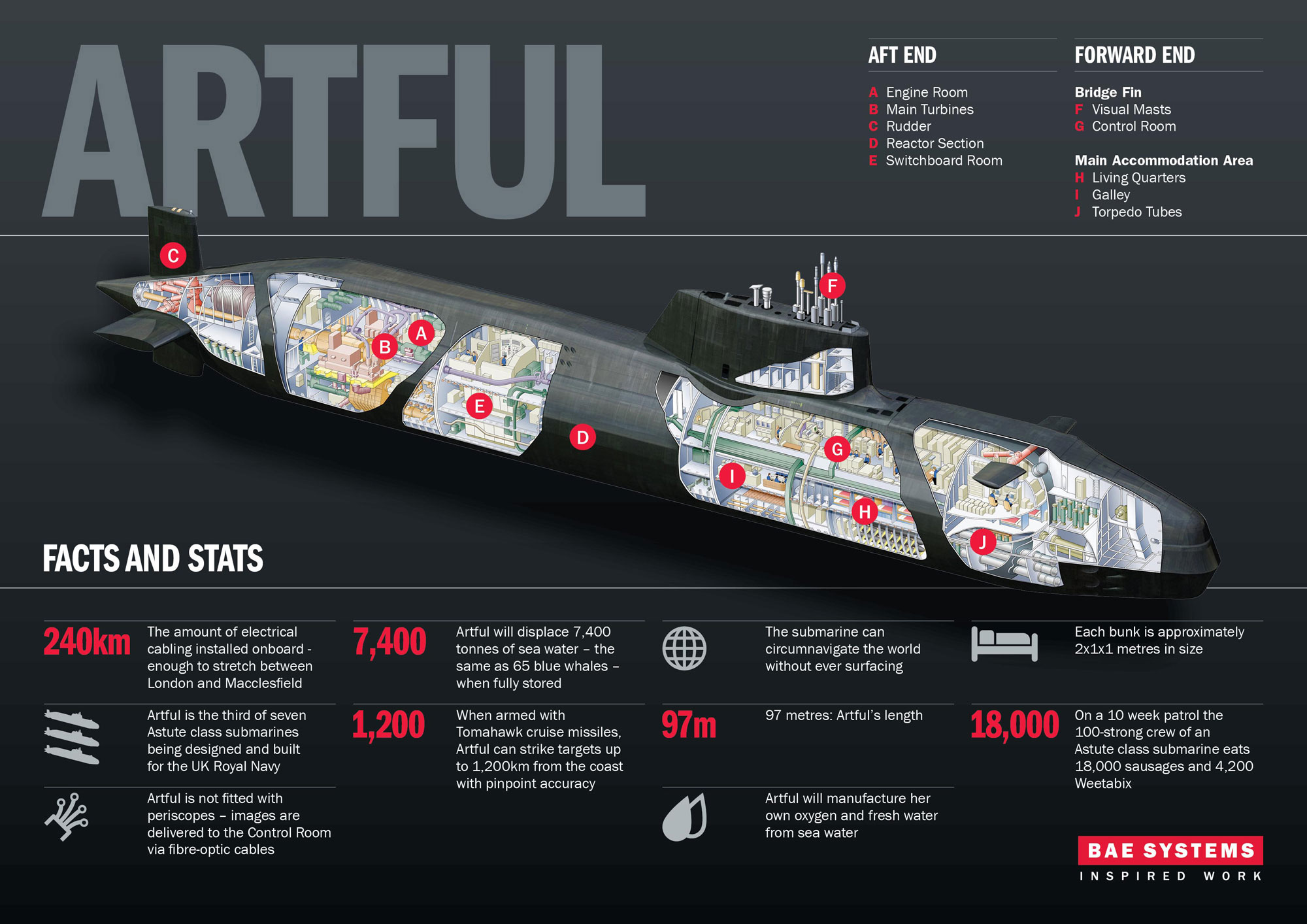
http://defense-update.com/20170817_modernizing-the-submarine-fleet.htmlThe submarine force is also being modernized. The Royal Navy maintains a fleet of ten nuclear-powered submarines, currently comprised of three types. The four Vanguard Class Strategic Ballistic Missile Submarines are carrying the Trident II D5 intercontinental ballistic missiles. These submarines are set for replacement in ten years, by the Dreadnought class, currently in preliminary design. About half of the £3.3 billion budget cleared Parliament for the program has been awarded.
The funding will enable BAE Systems to develop the design of the submarine, including the layout of equipment and systems, and to develop manufacturing processes, including the production of early prototypes. The new submarine will replace the Vanguard class subs in the 2030s. The main sub contractors include Babcock and Rolls Royce. Hundreds of potential suppliers, including many small and medium enterprises, throughout Britain will also take part in this program.
http://defense-update.com/20170816_spearfish.htmlThe Spearfish heavyweight guided torpedo is the primary anti-ship and anti-submarine weapon of Royal Navy submarines currently deployed with Trafalgar, Astute and Vanguard class submarines. It weighs two tons and measures five meters in length. Designed by BAE Systems Whitehead Division Spearfish is undergoing an upgrading phase expected to complete in 2020.
https://www.newscientist.com/articl...-entanglement-could-lead-to-unhackable-comms/The weird world of quantum mechanics is going for a swim. A team of Chinese researchers has, for the first time, transmitted quantum entangled particles of light through water – the first step in using lasers to send underwater messages that are impossible to intercept.
“People have talked about the idea of underwater quantum communication before, but I’m not aware of anyone who has done an experiment like this,” says Thomas Jennewein at the University of Waterloo in Canada. “An obvious application would be a submarine which wants to remain submerged but communicate in a secure fashion.”
Entanglement starts with a beam of light shot into a crystal. This prism splits the light into pairs of photons with strangely linked behaviour. Manipulate one particle in a pair, and its partner will instantly react. Measure the first one’s polarisation, for example, and entanglement could ensure that its twin will have the opposite polarisation when measured.
These entangled photons can theoretically be used to set up a secure communication line between two people, with privacy guaranteed by the laws of physics.
But this fragile quantum state can easily be disturbed by the surrounding environment. So far, entanglement has been maintained between particles separated by long distances after traveling through air, space and optical fibres.
To test entanglement in water, which is less forgiving toward light, Xianmin Jin and his colleagues at Shanghai Jiao Tong University in China gathered saltwater from the Yellow Sea and placed it in a 3-metre-long container. They were able to transmit entangled photons through the water without disturbing their quantum link.
As the first experiment of its kind, it’s not clear whether this will be enough to build a communications system. Three meters may not seem that impressive compared with the 1200 kilometres that a Chinese satellite recently sent entangled particles down to Earth’s surface. “It’s not very surprising to me that if I send light through 10 feet of water it doesn’t get depolarised,” says Paul Kwiat at the University of Illinois at Urbana-Champaign.
But Jin says this is only the beginning. His team’s calculations suggest that it should be possible to communicate over nearly 900 meters in water. Previous calculations set a more conservative limit of just over 120 meters.
“Because ocean water absorbs light, extending this is going to difficult,” says Jeffrey Uhlmann at the University of Missouri in Columbia. “One option would be to use relays, but right now this is very far removed from anything that would be practical.”
http://www.wired.co.uk/gallery/royal-navy-submarine-conceptsThe fictional Nautilus 100 'mothership' has a 3D-printed hull that's made of acrylic materials that can withstand depths of up to 1000m. Inside the vehicle there's room for 20 people, who control the system using a brain machine interface. The Royal Navy believes the mothership would act as a "control hub" for the other vehicles under its control.
Siellä on taas laivaston pojat korkannu rommitynnyrin.Brittilaivaston sukellusvene kuvitelmia
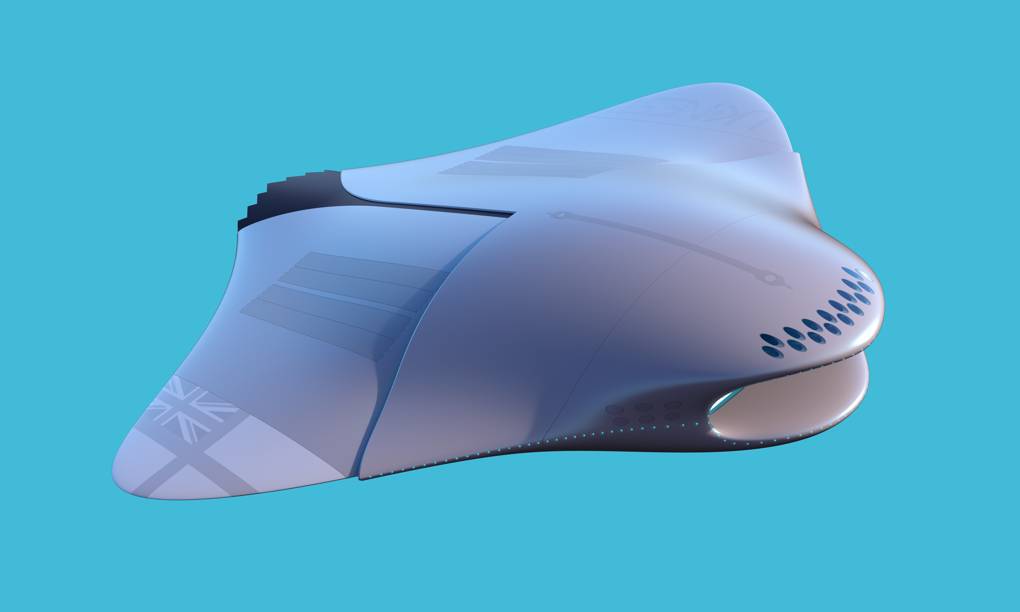
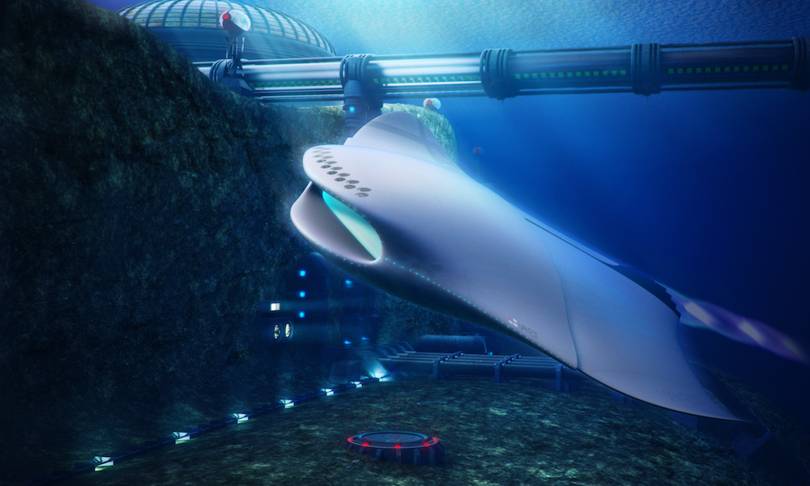
http://www.wired.co.uk/gallery/royal-navy-submarine-concepts
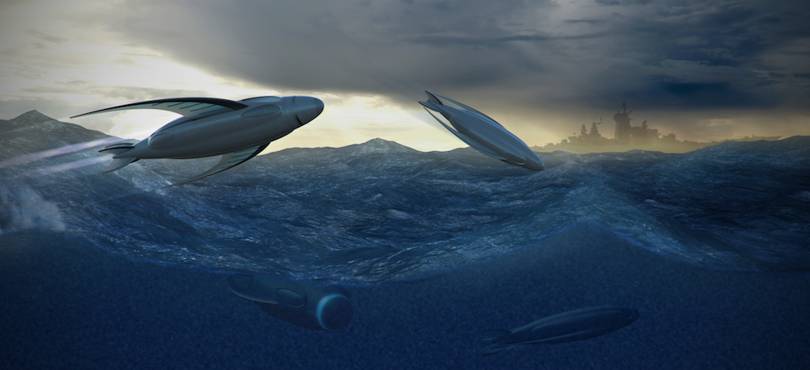
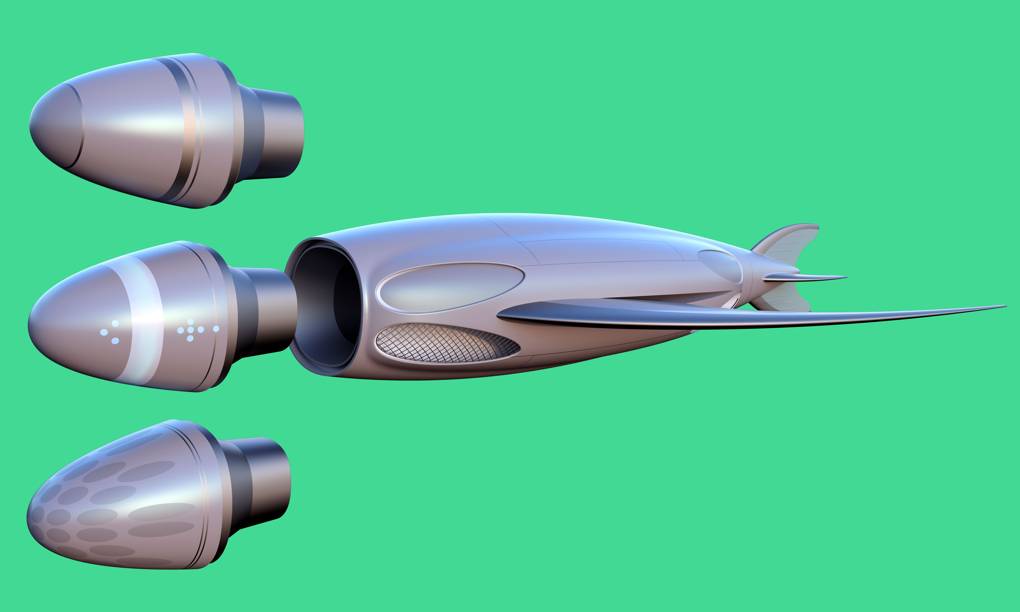

Brittien suve laivaston modernisaatioprojektista. Dreadnaughteja ei ole nähty sitten toisen maailmansodan alun.
http://defense-update.com/20170817_modernizing-the-submarine-fleet.html
Sukellusvene tuntuu kylläkin olevan rungoltaan lähes ikuinen mutta sisuskalut happanevat pian lopullisesti.
